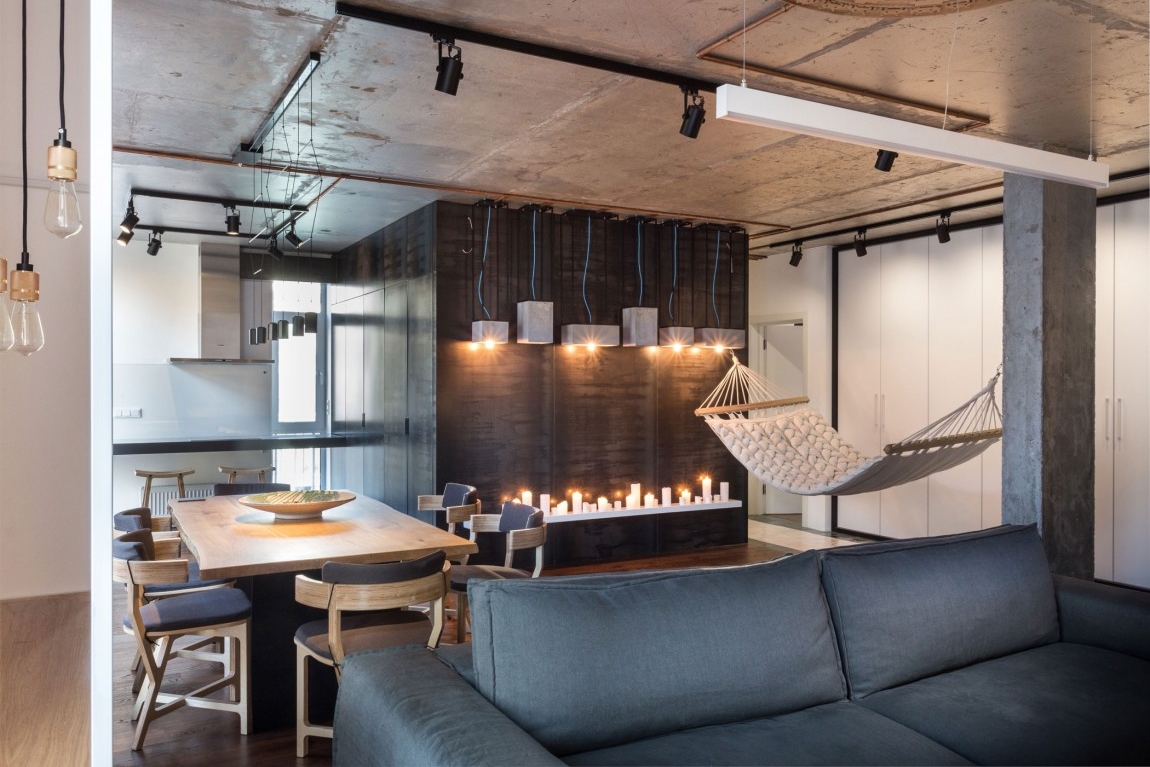In the realm of modern architecture, where form and function intertwine seamlessly, designers are constantly seeking innovative solutions to enhance both aesthetics and utility. One such versatile element that has found its place in contemporary design is wire shelving. Originally associated with storage solutions in industrial settings, wire shelving has transcended its utilitarian roots to become a design element in its own right. This article explores eight innovative uses of wire shelving in modern architecture, showcasing its adaptability and aesthetic appeal.
Open-Concept Dividers:
In open-plan living spaces, wire shelving serves as an excellent alternative to traditional room dividers. Its transparent nature allows for an uninterrupted line of sight, creating a sense of continuity while still defining separate zones within a space. By incorporating wire shelving as dividers, architects can maintain an open and airy feel while effectively delineating areas for various functions.
Vertical Green Walls:
Embracing sustainability and biophilic design, architects are integrating wire shelving into vertical gardens. The open structure of the shelving allows plants to thrive, creating lush green walls that not only contribute to improved air quality but also bring a touch of nature indoors. This innovative use of wire shelving blurs the boundaries between indoor and outdoor spaces, fostering a harmonious connection with the natural environment.
Sculptural Installations:
Wire shelving’s inherent flexibility lends itself to the creation of captivating sculptural installations. Designers are using wire shelving to craft dynamic and artistic structures that engage with the surrounding space. These installations often play with light and shadow, casting intricate patterns that evolve throughout the day. By pushing the boundaries of conventional design, architects are transforming wire shelving into visually striking works of art.
Floating Staircase Railings:
Modern staircases are not just functional; they are becoming focal points of architectural design. Wire shelving is increasingly being used as an alternative to traditional railings, providing a sleek and contemporary aesthetic. The thin profile of the shelves contributes to a sense of lightness, making the staircase appear to float in space. This minimalist approach to railing design enhances the overall openness of the structure.
Interactive Retail Displays:
In the retail sector, where visual appeal is crucial, wire shelving has found a new purpose as dynamic and interactive displays. These shelves offer a lightweight and modular solution for showcasing products. Retailers can easily reconfigure the shelving to adapt to changing merchandise or create thematic displays. The open design allows customers to interact with products from various angles, fostering a more engaging shopping experience.
Adaptable Workspace Solutions:
The flexibility of wire shelving makes it an ideal component for creating adaptable workspaces. From offices to co-working environments, designers are incorporating wire shelving to provide employees with customizable storage solutions. This adaptability not only enhances organizational efficiency but also contributes to a visually dynamic and stimulating work environment.
Lighting Fixtures and Pendant Lamps:
Wire shelving is being repurposed as the framework for contemporary lighting fixtures and pendant lamps. Designers are leveraging the open structure to play with light diffusion, casting intriguing patterns on surrounding surfaces. The result is a fusion of form and function, where the shelving not only serves a practical purpose but also becomes an integral part of the overall lighting design.
Exterior Facade Elements:
Breaking away from conventional building materials, architects are experimenting with wire shelving as an exterior facade element. Whether used as a sunshade or an artistic embellishment, the open and airy nature of the shelving creates a dynamic interplay between light and shadow, adding depth and character to the building’s exterior. This unconventional use of wire shelving challenges the norms of facade design, pushing the boundaries of architectural expression.
Wire shelving, once relegated to the realm of storage solutions, has evolved into a multifaceted design element in modern architecture. Its adaptability, transparency, and inherent flexibility have inspired architects to explore innovative applications, ranging from open-concept dividers to exterior facade elements. As the boundaries between form and function continue to blur, wire shelving stands as a testament to the creative ingenuity within the architectural realm, offering a versatile canvas for designers to push the boundaries of conventional design and embrace the ever-evolving landscape of modern architecture.
Can wire shelving be used outdoors, and how does it withstand different weather conditions?
Yes, wire shelving can be used outdoors. In fact, architects are increasingly utilizing wire shelving as exterior facade elements and sunshades. The materials used in modern wire shelving are often corrosion-resistant, making them suitable for various weather conditions.
Is wire shelving suitable for residential spaces, or is it mainly for industrial use?
Wire shelving has transcended its industrial roots and is now widely used in residential spaces. It serves various purposes, from room dividers to floating staircase railings, providing a modern and minimalist aesthetic in contemporary homes.
How difficult is it to maintain wire shelving when used as part of a vertical garden or green wall?
Maintaining wire shelving in vertical gardens is relatively straightforward. The open structure allows for easy access to plants, and regular watering and pruning can be performed without much hassle. Additionally, the shelves are often made of materials resistant to rust and corrosion.
Can wire shelving be customized for specific design needs, or is it only available in standard configurations?
Wire shelving is highly customizable, allowing architects and designers to tailor the shelves to specific design requirements. This flexibility makes it suitable for a wide range of applications, from sculptural installations to adaptable workspace solutions.
Are there weight limitations for wire shelving, especially when used for storage in office environments?
While wire shelving is designed to be durable and strong, there are weight limitations that depend on the specific design and materials used. It’s important to consider the intended use and weight-bearing requirements when selecting wire shelving for storage solutions in office environments.












